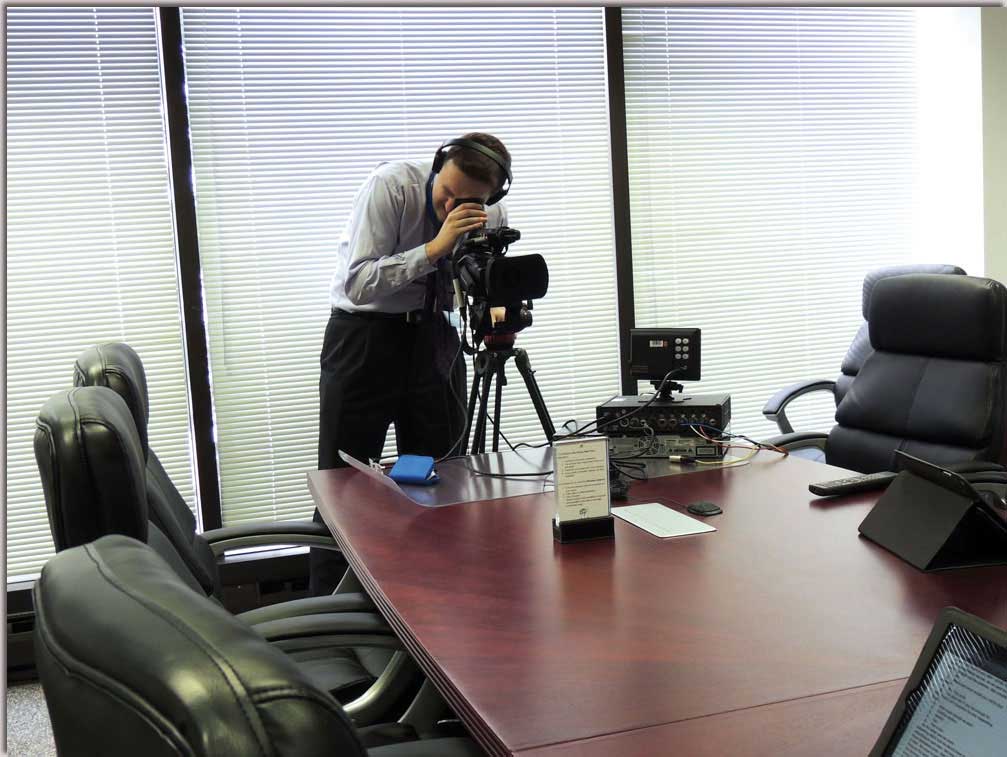Legal Videography: Transforming the Means Evidence is Recorded and Provided
Legal Videography: Transforming the Means Evidence is Recorded and Provided
Blog Article
Looking Into the Systems of Legal Videography: Introduction Its Operation in Safeguarding Genuine Aesthetic Statement for Judicial Proceedings
In the world of judicial procedures, the function of lawful videography stands as a keystone in preserving and offering aesthetic proof. As innovation remains to advancement, the mechanisms behind lawful videography have come to be significantly detailed, supplying a crucial layer of authenticity to statements recorded on video clip. By diving into the operational ins and outs of legal videography, one can reveal the careful procedures that protect the stability of visual evidence presented in court rooms - Legal Videography. This expedition not just clarifies the historical advancement of lawful videography however additionally means the future patterns that may better revolutionize just how visual testimonies are supported in the realm of justice.
Historical Evolution of Lawful Videography
Examining the historical development of lawful videography discloses a considerable makeover in the recording and presentation of visual proof within the lawful landscape. In the past, legal procedures heavily relied upon written photographs and transcripts to document occasions and offer evidence. With the advent of video technology, the lawful sector saw a standard change in exactly how aesthetic statement was caught and offered.
The evolution of lawful videography can be mapped back to the late 20th century when advancements in video recording equipment made it extra obtainable for use in courts. This technical development not just improved the precision and dependability of aesthetic proof but also changed the way situations were presented to courts and judges (Legal Videography). Attorneys started to identify the convincing power of video clip recordings in sharing feelings, subtleties, and non-verbal signs that created photographs or records alone might not catch efficiently

Modern Technology Advancements in Video Documentation
What key technical innovations have revolutionized video paperwork in the legal area? The legal field has actually seen considerable improvements in video paperwork innovation that have actually boosted the authenticity and reliability of aesthetic proof in judicial process. One of the vital developments is high-def (HD) video recording abilities, which supply crystal-clear pictures and sharp details that are vital for precisely catching statements, faces, and other visual hints. Additionally, the integration of timestamping and metadata attributes in video documents devices has actually made it possible for exact documents of when and where the video clip was videotaped, guaranteeing the stability of the proof offered in court.
In addition, developments in video clip file encryption and watermarking modern technologies have reinforced the security and tamper-proof nature of video evidence, protecting it versus unapproved alterations or meddling. Furthermore, the advent of cloud storage space services and remote accessibility capacities has streamlined the storage, retrieval, and sharing of video clip evidence, promoting smooth partnership amongst attorneys and making certain reliable access to essential aesthetic statements when required. These technological developments in video documents have unquestionably changed the lawful field, enhancing the precision, trustworthiness, and admissibility of aesthetic proof in judicial proceedings.
Function of Lawful Videographers in Court Room Settings
The evolution of video clip documents innovation in the lawful area has required a crucial role for legal videographers in court room setups, ensuring the honesty and dependability of visual testimonies provided throughout judicial process. Legal videographers play a basic function in capturing and protecting precise aesthetic evidence that can be crucial in litigation. Their duty includes establishing up tools, taping proceedings, and generating top notch videos that properly mirror the occasions in the courtroom.
In addition, legal videographers typically function closely with lawful teams to make sure that the video proof aligns with the case's requirements and can be properly provided in court to sustain the lawful disagreements being made. Overall, the function of legal videographers in courtroom settings is indispensable in promoting the concepts of justice and guaranteeing the transparency of legal proceedings. Legal Videography.

Ensuring Admissibility and Honesty of Video Clip Evidence
To maintain the credibility of visual evidence offered in legal process, guaranteeing the admissibility and integrity of video evidence is an essential duty for legal official site videographers. Admissibility refers to the acceptance of evidence by the court, and for video clip evidence to be acceptable, it has to satisfy certain requirements. Legal videographers play a critical function in guaranteeing that the videos they record follow the guidelines of evidence, such as dependability, authenticity, and importance.
Honesty of video clip proof involves maintaining the creativity and accuracy of the video footage from the time it is taped up until it exists in court. This includes firmly saving the video clip files, documenting the chain of wardship, and preventing any type of tampering or changes. Lawful videographers have to follow rigorous protocols to assure the integrity of the video proof and prevent any kind of obstacles to its credibility.
Future Trends in Legal Videography
Offered the boosting reliance on innovation in lawful process, lawful videographers are positioned to welcome ingenious innovations shaping the future of visual statement capture and presentation. One of the noticeable trends coming up is the integration of digital reality (VIRTUAL REALITY) and augmented fact (AR) innovations into legal videography. These modern technologies have the possible to revolutionize just how visual proof is presented in court rooms, allowing judges and juries to immerse themselves in the scene of the crime or occurrence.
Furthermore, using man-made knowledge (AI) algorithms for video evaluation is anticipated to improve the procedure of evaluating and analyzing large amounts of video clip footage. AI can assist in identifying essential minutes, anomalies, and patterns within video clips, boosting the effectiveness of lawful investigations.

Final Thought
To conclude, legal videography has played an important function in giving genuine aesthetic evidence for judicial procedures. With technological advancements and the knowledge of legal videographers, the honesty and admissibility of video proof are ensured in courtroom settings. As legal videography remains to evolve, it will be necessary to promote criteria that maintain the precision and integrity of visual testimony for the future of legal process.
Examining the historical progression of lawful videography discloses a significant makeover in the catching and discussion of aesthetic evidence within the lawful landscape.The advancement of video clip paperwork innovation in the legal field has actually required a Full Article crucial role for legal videographers in courtroom setups, ensuring the stability and reliability of visual testaments provided during judicial procedures. link In addition, legal videographers typically function closely with legal teams to make sure that the video proof aligns with the situation's requirements and can be successfully offered in court to sustain the lawful arguments being made.To preserve the reputation of aesthetic proof presented in legal procedures, making certain the admissibility and integrity of video clip evidence is a vital responsibility for legal videographers. As lawful videography continues to advance, it will be essential to maintain standards that keep the precision and integrity of aesthetic testimony for the future of legal process.
Report this page